Exercises To Strengthen Knees
Can you strengthen your knees? Do you get knee pain when walking, running, going up or down stairs? What about standing or sitting into a chair?
Then this is the right blog for you.
What is a knee?
The knee is a hinge joint that moves forward into extension and backwards into flexion, but also has some degree of rotation which is usually forgotten about. You also have the patella, known as the knee-cap. This structure works with the knee joint and surrounding muscles to aid in movement. The knee joint is important for supporting our body weight, absorbing forces as our foot strikes the ground, and functionally aids our lower limbs for movement.
Here are some examples from Zhang et al. regarding how much of our body-weight our knees support us during daily activities:
-Walking = 2-3x body-weight
-Sit to stand to sit = 2-5x body-weight
-Stairs = 4-6x body-weight
-Running = 7-12x body-weight
Because the knee is so important in our daily functional movements, it is important to exercise the surrounding structure to help the knee function pain free. When the structures around our knee (specifically muscles) are weak, the knee ends up taking more load, which can cause pain and risk of injury. Research states knee pain is predicted to be the fourth leading cause of global disability.
Some common knee injuries include:
1.Knee osteoarthritis affecting 7-17% (high risk elderly, obese or previous limb injury)
-
-
- Of these, estimated 46% adults in their lifetime will develop knee pain due to Knee osteoarthritis
-
2.Ligament injuries 40% (ACL 46%, MCL 29%, PCL 4%, LCL 2%, ACL with MCL 13%)
3.Meniscus injuries 11%
4.Patella injuries 24%
5. Other 25%
What exercises can I do to strengthen the knee?
Here are a couple exercises to help you strengthen your knee.
**If you have knee pain it is highly advised to see a physiotherapist before attempting any type of exercise.
1.Wall sits at 60-65 degrees knee flexion
Muscles targeted: quadricep, main muscle vastus medialis obliquus
-Place back against wall, bending knees at 60-65degrees with your ankles just under your knees.
-Hold position for 20 seconds, do 3 sets of these with at least 30-60 seconds rest between sets.
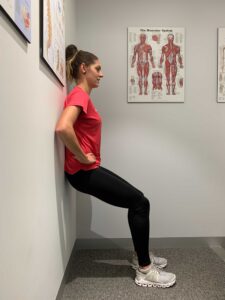
2.Staggered sit to stand
Muscles targeted: quads, hamstrings, calves, glutes
-Adjust yourself on a chair like you would if you were to stand up out of it but plane one leg half a foot forward.
-Now with 80-90% bodyweight in the back leg and 10-20% bodyweight in the foot in front, lift your bottom off the chair. Remember to plack pressure into the heels not your toes.
-Stand all the way up, but you’re not done yet.
-Now you will have to sit back down controlled, meaning do not fall back down into the chair. Control your bottom back to the chair.
-Things to watch out for: make sure your knees do not cave in. The knee should be above the ankle and hips should be parallel to the knees.
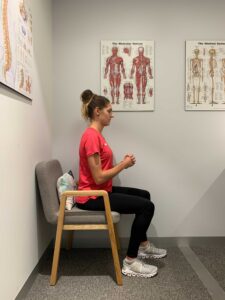
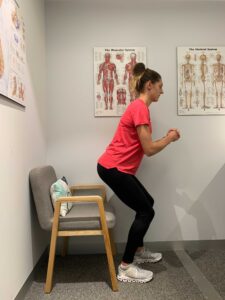
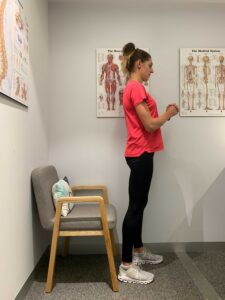
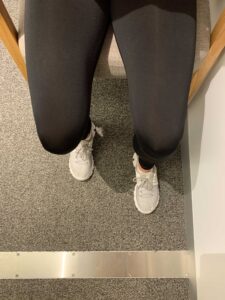
If you are interested in investing in your knee health, decreasing your knee pain and/or suffer from one of the above injuries, feel free to reach out. My name is Paulina and I have a special interest in lower limb injury prevention and management. To book in an appointment with me, click HERE.
By Physiotherapist, Paulina Backiel
References
1.Zhang L, Liu G, Han B, Wang Z, Yan Y, Ma J, Wei P. Knee joint biomechanics in physiological conditions and how pathologies can affect it: a systematic review. Applied bionics and biomechanics. 2020 Apr 3;2020.
2.Bollen S. Epidemiology of knee injuries: diagnosis and triage. British Journal of Sports Medicine. 2000;34:227-228.
3.Hislop AC, Collins NJ, Tucker K, Deasy M, Semciw AI. Does adding hip exercises to quadriceps exercises result in superior outcomes in pain, function and quality of life for people with knee osteoarthritis? A systematic review and meta-analysis. British journal of sports medicine. 2020 Mar 1;54(5):263-71
Related Articles
May
May
Apr